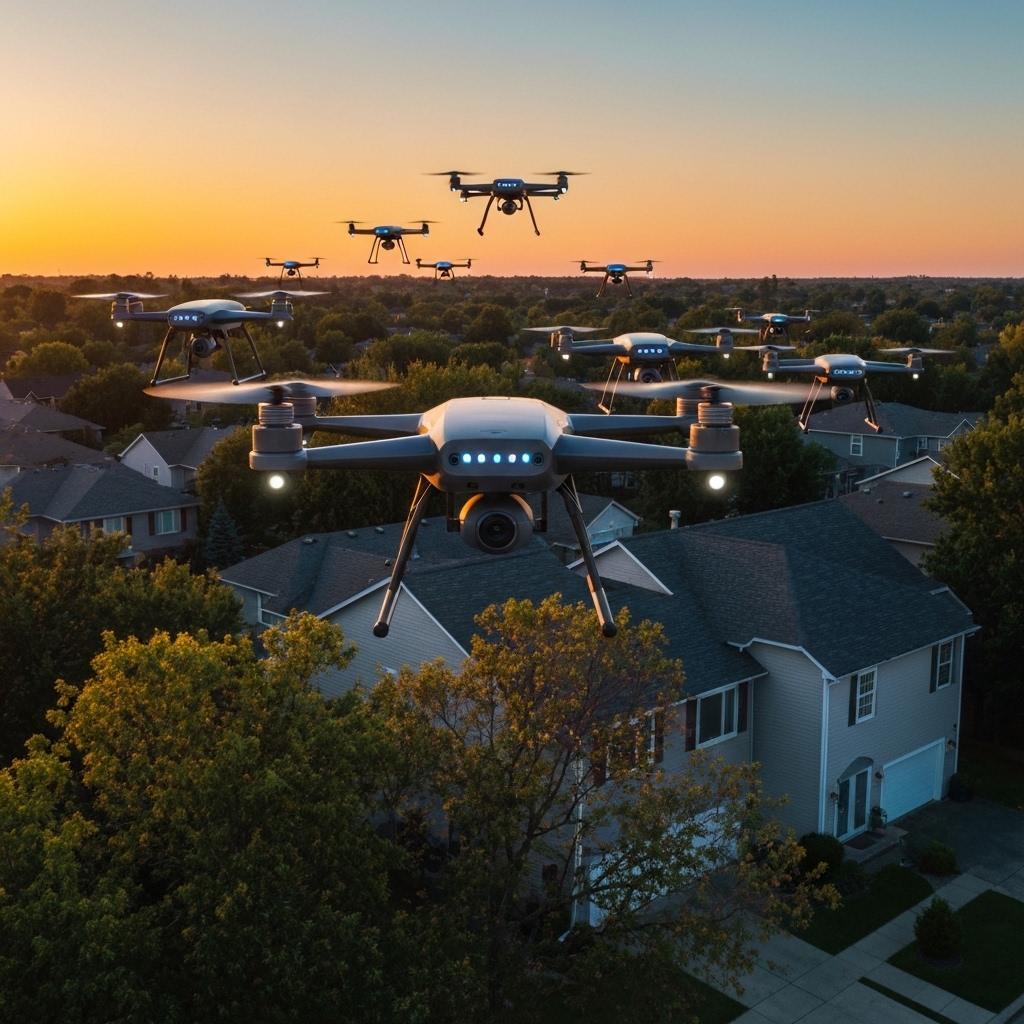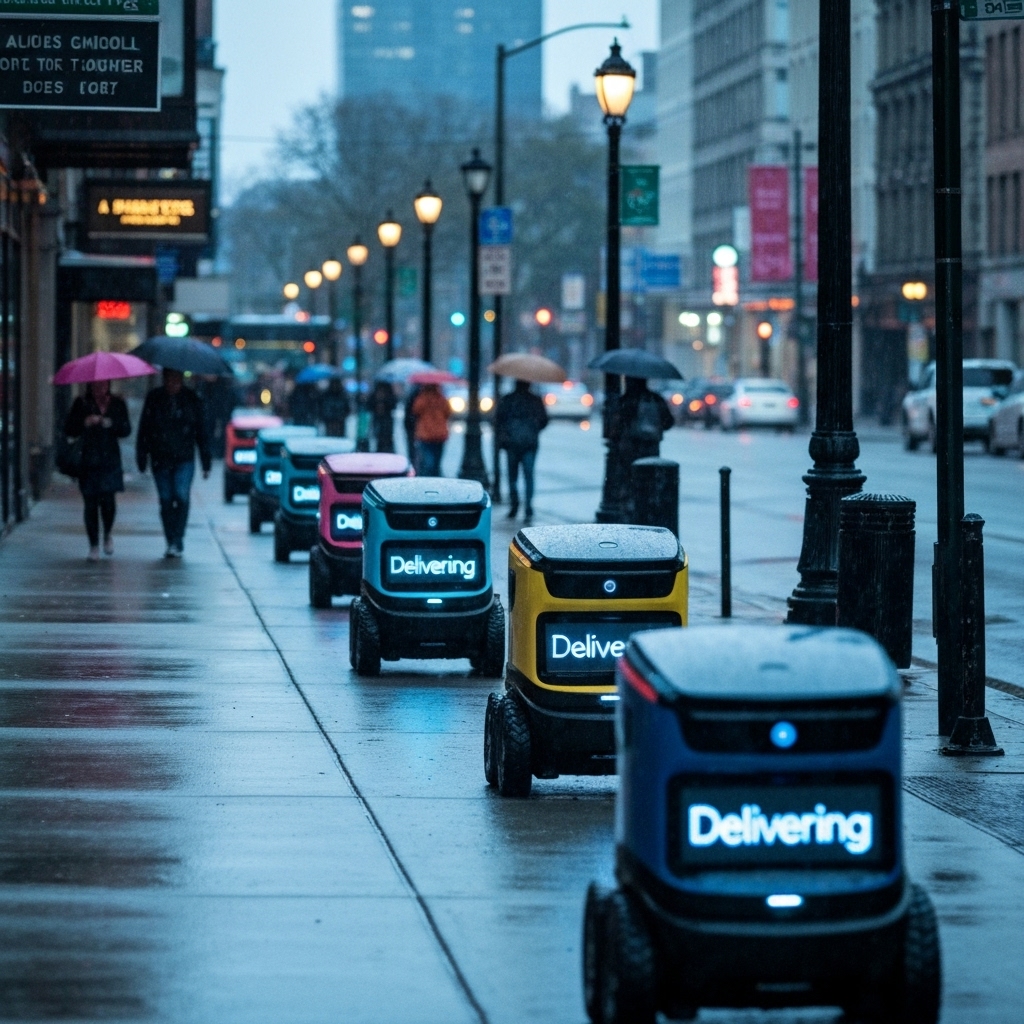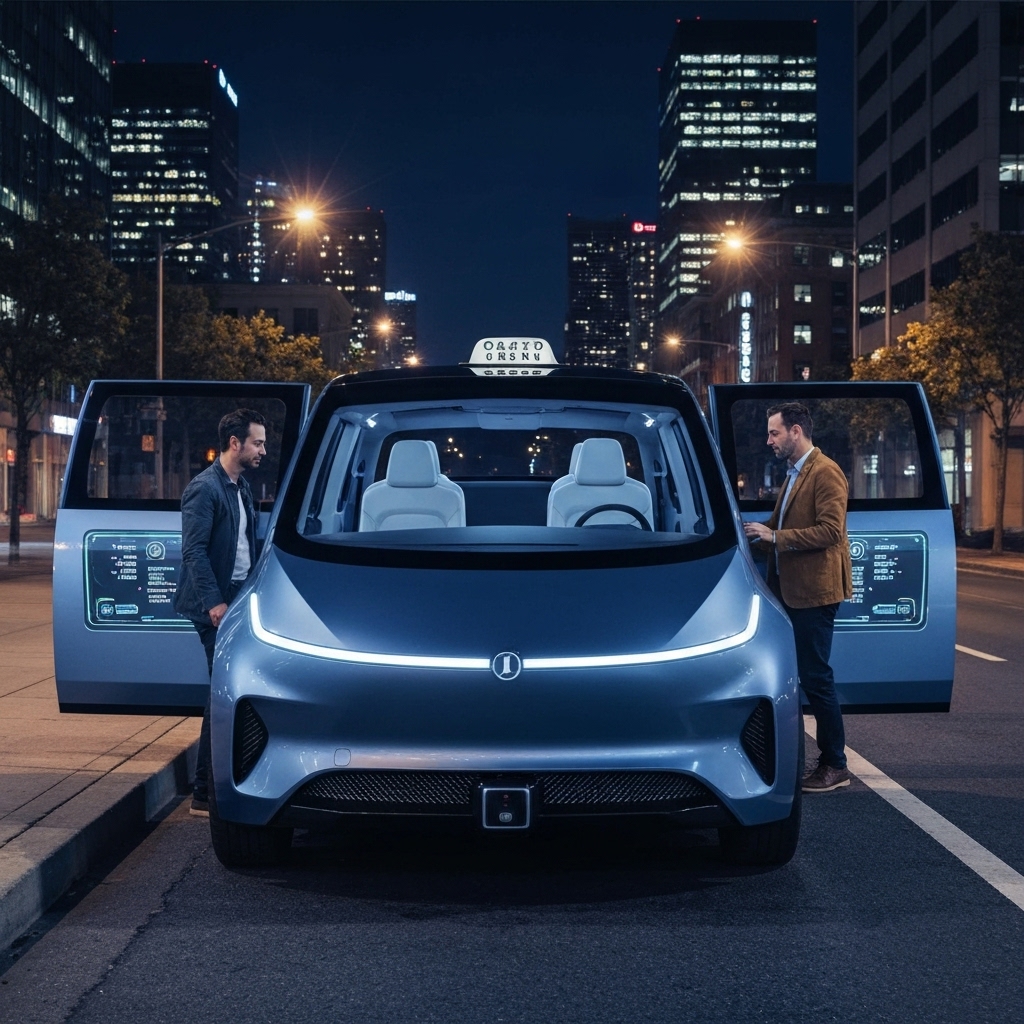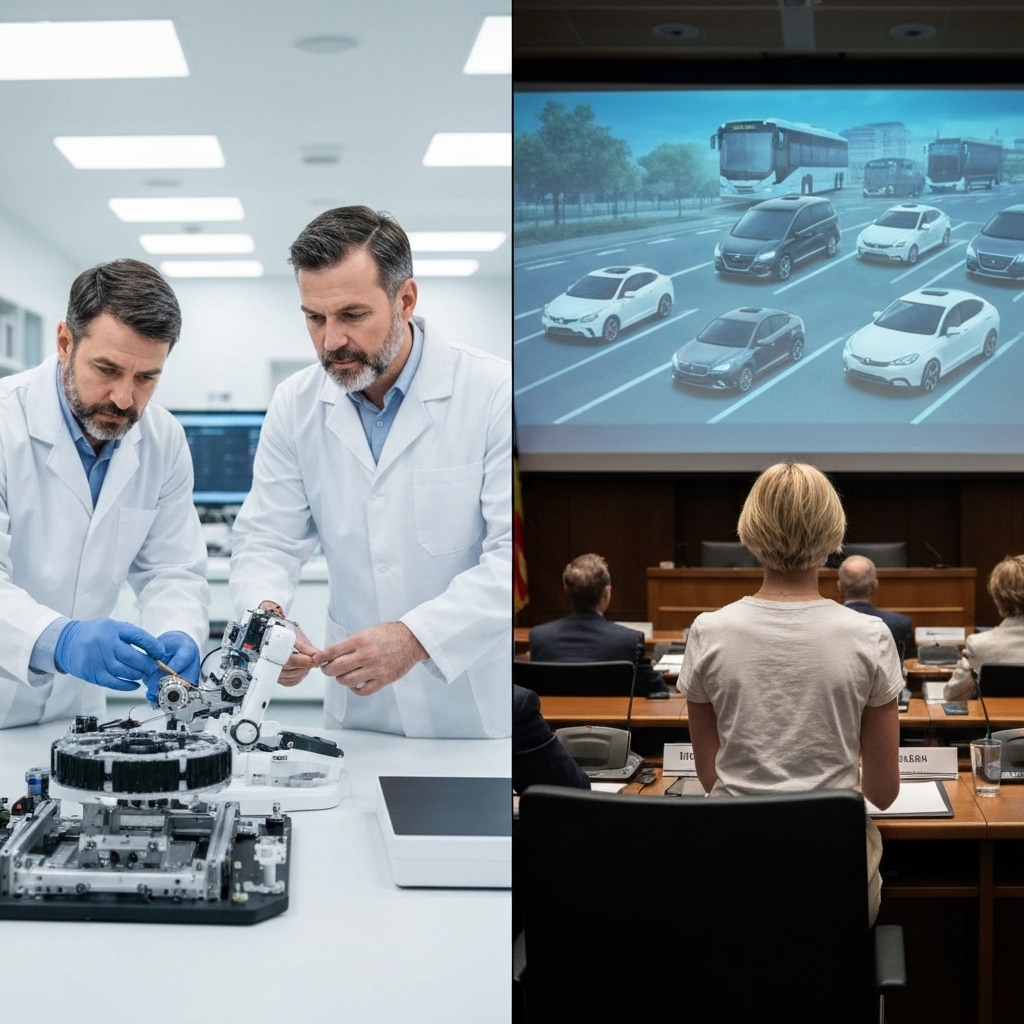The year 2025 has ushered in a new era where autonomous technology is seamlessly integrating into daily life. From self-flying drones conducting aerial inspections to delivery robots maneuvering through bustling city sidewalks, these systems are no longer confined to research labs or pilot programs. Companies like Amazon and FedEx are now deploying autonomous ground vehicles for last-mile deliveries, significantly reducing delivery times and carbon emissions. These advancements are supported by improvements in sensor fusion, machine learning, and edge computing, enabling machines to interpret complex environments with near-human accuracy.
In transportation, fully autonomous vehicles are beginning to operate at scale in controlled environments such as logistics hubs and designated urban zones. Waymo and Cruise have expanded their driverless taxi services to multiple cities, offering safer and more efficient alternatives to traditional ride-hailing. Meanwhile, companies like Tesla and Mobileye are pushing the boundaries of consumer-grade autonomy, equipping vehicles with advanced driver-assistance systems that pave the way for full self-driving capabilities. According to the National Highway Traffic Safety Administration (NHTSA), early data suggests autonomous systems could reduce traffic accidents caused by human error by up to 90%. Learn more about autonomous vehicle safety at NHTSA’s official page.
Urban planning is also adapting to accommodate this shift. Cities like Singapore and San Diego are redesigning infrastructure to support autonomous fleets, incorporating smart traffic signals and dedicated lanes for robotic vehicles. Autonomous public transit solutions, such as driverless shuttles, are being tested in downtown districts to ease congestion and improve accessibility. The integration of AI-powered logistics robots in warehouses—like those developed by Boston Dynamics and Amazon Robotics—has dramatically increased efficiency in supply chains, cutting operational costs and delivery delays.
Despite these advances, challenges remain around regulation, cybersecurity, and public trust. Governments and industry leaders are working together to establish standardized frameworks for safe deployment. Organizations like the IEEE and the International Organization for Standardization (ISO) are developing global guidelines for ethical AI and robotics use. As autonomy becomes more pervasive, ongoing dialogue between technologists, policymakers, and communities will be essential to ensure equitable access and responsible innovation. For more on ethical AI development, visit IEEE and ISO.
The Rise of Autonomous Drones
Autonomous drones have rapidly transitioned from hobbyist gadgets to critical assets across multiple industries. Equipped with advanced AI algorithms, these drones can now independently navigate dense forests, urban landscapes, and disaster zones without human input. By leveraging real-time data processing and sophisticated obstacle avoidance systems, they maintain safe and efficient flight paths even in unpredictable environments. This leap in autonomy has been fueled by improvements in machine learning, sensor fusion, and edge computing, allowing drones to make split-second decisions based on their surroundings.
In agriculture, autonomous drones are transforming how farmers monitor and manage crops. Using multispectral imaging and AI analytics, they can detect signs of disease, nutrient deficiencies, and water stress long before they become visible to the naked eye. This enables precision farming techniques that reduce waste and increase yields. Companies like DJI and Sentera offer drone solutions tailored for agricultural insights, helping farmers make data-driven decisions.
Emergency response teams also rely on autonomous drones to deliver life-saving supplies to hard-to-reach areas. In remote or disaster-stricken regions, drones have successfully transported medical kits, blood samples, and even defibrillators. Organizations such as Zipline have pioneered drone delivery networks in countries like Rwanda and Ghana, drastically cutting down response times. As regulations evolve and technology improves, these aerial systems are becoming a standard part of modern humanitarian efforts.

Delivery Robots: Redefining Last-Mile Logistics
Autonomous delivery robots are increasingly becoming a common sight on city sidewalks, offering a sustainable and efficient solution to last-mile delivery challenges. These compact, wheeled robots—often designed to carry small payloads like groceries or restaurant meals—navigate urban environments using a combination of sensors, cameras, and AI-powered navigation systems. By operating at low speeds and adhering to pedestrian traffic rules, they blend seamlessly into foot traffic while reducing reliance on gas-powered delivery vehicles. Companies like Starship Technologies have already deployed thousands of these robots across college campuses and residential neighborhoods.
Safety is a top priority for these robots, which use real-time object detection to identify pedestrians, pets, and obstacles. Advanced machine learning models allow them to predict movements and adjust their paths accordingly, minimizing the risk of collisions. Many models also include remote human monitoring capabilities, enabling operators to assist when the robot encounters complex situations. This hybrid approach ensures reliability without compromising public safety. The integration of such technology has been supported by research from institutions like MIT, which studies human-robot interaction in urban settings.
As cities look for ways to reduce congestion and carbon emissions, autonomous delivery robots present a promising alternative to traditional delivery vans. Their small size means they take up less space and generate minimal noise pollution, making them ideal for dense urban areas. Municipalities such as Washington, D.C., have begun establishing regulations to accommodate these devices, balancing innovation with public safety. For more information on local policies, visit the District of Columbia government website.
Customer adoption is growing as people appreciate the convenience and contactless nature of robot deliveries, especially for routine purchases like food or household essentials. With continued advancements in battery life, weather resistance, and route optimization, these robots are poised to become a standard part of urban logistics networks. As the technology matures, partnerships between tech companies and local businesses are expected to expand access and lower delivery costs for consumers.

Self-Driving Vehicles: Beyond the Hype
2025 marks a turning point in automotive history as self-driving cars finally achieve true Level 5 autonomy—the highest level defined by the SAE International. At this stage, vehicles operate entirely without human intervention, meaning no steering wheels, pedals, or manual override options. These fully autonomous cars rely on advanced sensor arrays, real-time machine learning algorithms, and high-definition mapping systems to navigate complex urban environments safely and efficiently.
Leading tech giants like Waymo and automakers such as Tesla and GM’s Cruise have rolled out commercial ride-hailing services in select metropolitan areas, including Phoenix and San Francisco. These services operate within geofenced zones where infrastructure and traffic patterns support reliable autonomous navigation. Riders can summon a driverless vehicle via smartphone app, experiencing firsthand the seamless integration of AI into daily commutes. For more on current deployments, check updates from Waymo and Cruise.
The shift isn’t just technological—it’s cultural. Consumers are beginning to rethink car ownership, with many opting for on-demand mobility instead of the costs and responsibilities of maintaining a personal vehicle. This trend aligns with broader urban planning goals, such as reducing traffic congestion and lowering emissions. As cities adapt to accommodate autonomous fleets, we’re seeing early signs of a transportation revolution that could reshape commuting, logistics, and city design.

Challenges and Ethical Considerations
The rapid advancement of autonomous systems, from self-driving cars to AI-powered industrial robots, has introduced a wave of innovation across industries. However, with these breakthroughs come significant challenges that society must address. Cybersecurity is a growing concern, as interconnected autonomous devices can become targets for hackers, potentially leading to dangerous real-world consequences. Ensuring robust encryption and secure communication protocols is essential, and organizations like the National Institute of Standards and Technology (NIST) are actively developing guidelines to mitigate these risks.
Another pressing issue is job displacement, as automation increasingly takes over tasks traditionally performed by humans. While autonomy can boost efficiency and reduce human error, it also threatens employment in sectors like transportation, manufacturing, and customer service. Economists and policymakers are exploring solutions such as reskilling programs and universal basic income to support affected workers. The World Economic Forum offers insights into the future of jobs and workforce transformation through its Future of Jobs Report.
Equally complex are the ethical dilemmas embedded in decision-making algorithms. Autonomous systems often rely on machine learning models trained on vast datasets, which may contain biases or lack transparency. Questions arise about accountability—especially in life-or-death situations, such as those faced by self-driving vehicles during accidents. Establishing clear ethical frameworks and ensuring algorithmic fairness are critical steps toward building public trust. Institutions like the IEEE are working on global standards for ethical AI and autonomous systems.
Meanwhile, regulatory bodies around the world are struggling to keep pace with the speed of technological change. Inconsistent regulations across regions can hinder deployment and create legal gray areas. Governments and international coalitions are now collaborating to develop unified safety standards and data privacy protections. For example, the European Union’s AI Act aims to set a precedent for responsible AI development, emphasizing transparency, risk assessment, and human oversight.

Conclusion: Embracing the Autonomous Future
As autonomous systems—from self-driving cars to smart home devices—become more embedded in our routines, the conversation is shifting from technical feasibility to real-world impact. These technologies promise significant gains in efficiency, such as optimizing traffic flow to reduce congestion and lowering fuel consumption. According to the U.S. Department of Energy, smarter transportation systems could cut vehicle emissions by up to 20%, a crucial step in addressing climate change. But beyond environmental benefits, autonomy also holds the potential to improve safety; the National Highway Traffic Safety Administration (NHTSA) reports that over 90% of car crashes involve human error, suggesting that automated systems could dramatically reduce accidents when properly implemented.
Yet, the road to widespread adoption isn’t without hurdles. Ensuring these technologies serve all communities—not just the wealthy or tech-savvy—requires thoughtful policy and inclusive design. Without proactive measures, there’s a risk that the benefits of autonomy will be unevenly distributed, deepening existing social and economic divides. Initiatives like those promoted by the Brookings Institution emphasize the need for equitable access and workforce retraining, especially in industries likely to be disrupted, such as trucking and delivery services.
Public trust remains another critical factor. People are understandably cautious about ceding control to machines, especially in life-or-death situations. Transparent development practices, rigorous testing standards, and opportunities for public input can help build confidence. Organizations like IEEE are already working on ethical frameworks for autonomous systems, advocating for accountability and human oversight. Ultimately, the success of the autonomous revolution won’t be measured just by how smart our machines become, but by how well they serve humanity as a whole.
